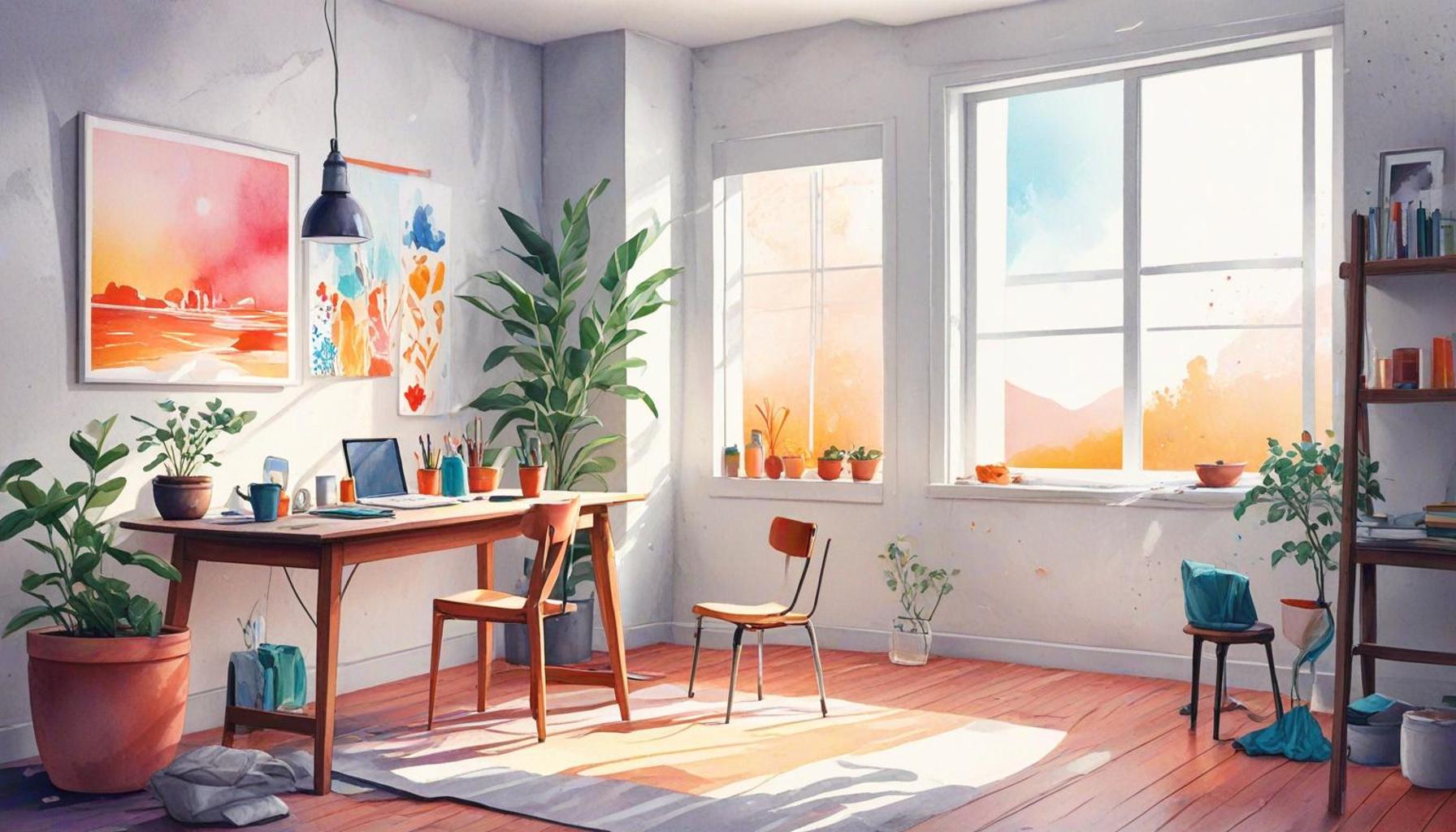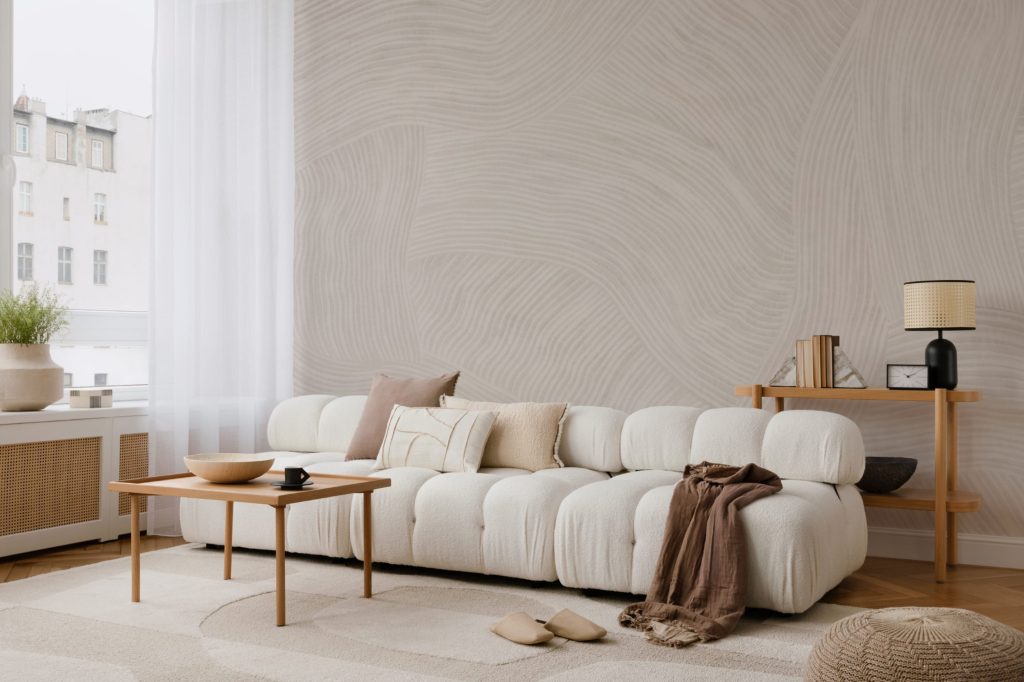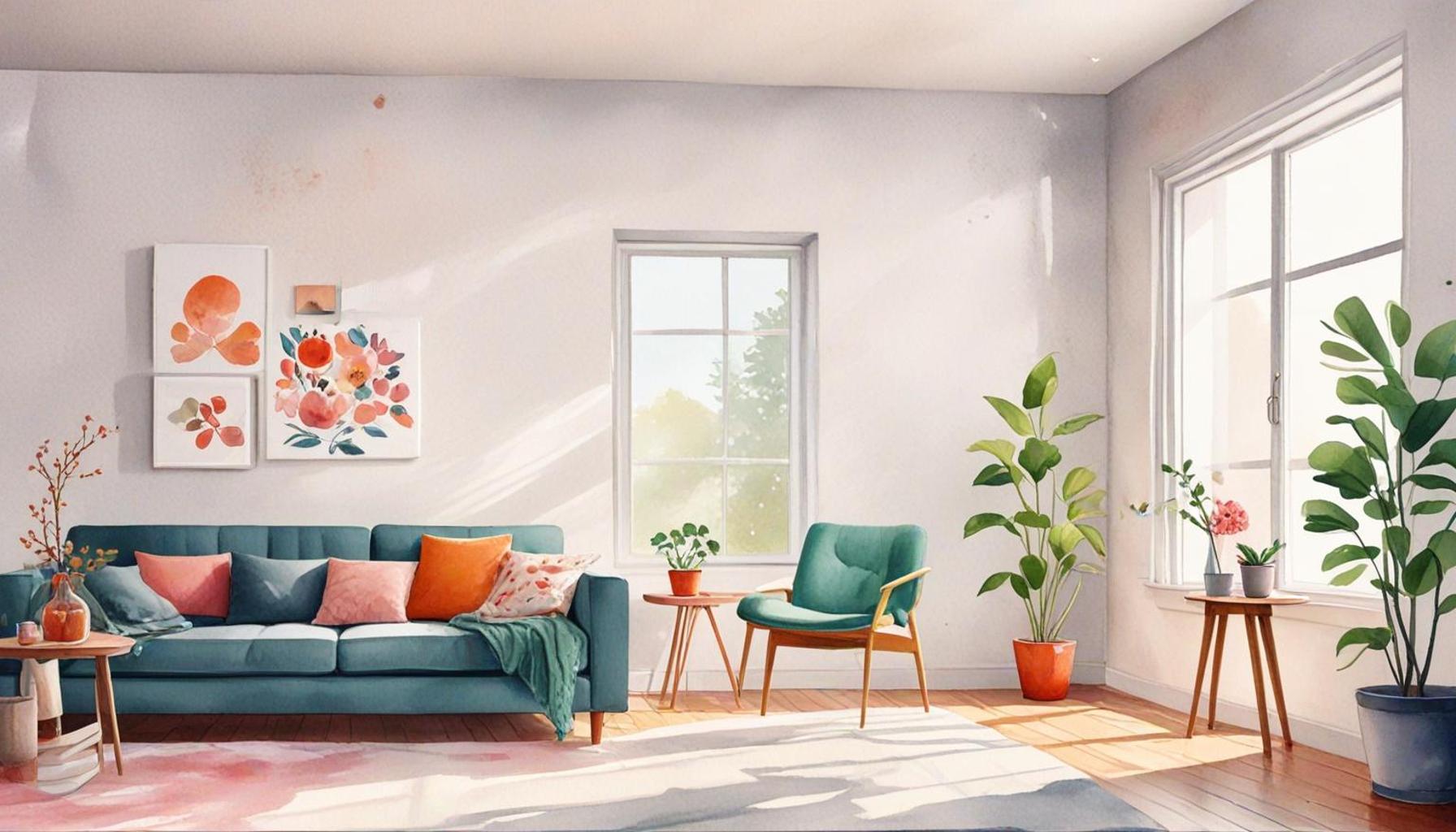Intentional Design: Fusion of Aesthetics and Functionality in Minimalist Environments

The Essence of Intentional Design in Modern Spaces
In the evolving landscape of design, the principle of intentionality is paramount, especially within minimalist settings. Intentional design is a method that combines utility and aesthetics, ensuring that each space is thoughtfully constructed to enhance the overall user experience. This approach seeks to redefine environments where simplicity meets sophistication, shaping not just how a space looks but also how it functions in our daily lives.
At the core of intentional design are a few key elements that guide the process toward a balanced outcome:
- Clarity and Simplicity: In a world overflowing with distractions, removing unnecessary clutter fosters a more usable and serene environment. For instance, a clean desk setup in a home office can boost productivity by minimizing visual noise.
- Purposeful Choices: Each component of a design is selected with intention, ensuring that everything from furniture to color palette serves a unique function. For example, choosing multifunctional furniture, such as a coffee table that doubles as storage, maximizes efficiency without sacrificing style.
- Aesthetic Appeal: Intentional design focuses on creating arrangements that are not only practical but also delightful to the eye. A well-designed living space uses color schemes and textures that work together to create a soothing atmosphere while still being efficient.
The influence of intentional design on our living environments is significantly noticeable in contemporary American homes and commercial spaces. This trend is reshaping our perceptions of not just aesthetics, but also the emotional and functional experiences tied to our surroundings.
Exploring tangible examples reveals how intentional design becomes manifest:
- Open Floor Plans: This popular architectural approach fosters fluid movement and encourages social interaction, making it ideal for families and communal spaces. Homes now often feature interconnected living, dining, and kitchen areas that flow seamlessly into each other.
- Natural Lighting: Incorporating large windows and strategically placed skylights enhances mood and vitality while decreasing the need for artificial lighting. Spaces flooded with natural light can also create a welcoming ambiance that invigorates the occupants.
- Quality Materials: There is a noticeable shift towards using sustainable, high-quality materials that will last over time. For instance, reclaimed wood or responsibly sourced stone not only provide a rustic charm but also align with ecological values, minimizing waste.
By harmonizing aesthetics with functionality, intentional design creates environments that are not only striking but also facilitate a lifestyle of purpose and clarity. This captivating synergy of creativity and practicality in contemporary minimalist spaces invites us to rethink how we interact with our surroundings, encouraging a deeper understanding of the spaces we inhabit. As intentional design continues to evolve, it challenges us to create environments that truly reflect our values while enhancing our daily experiences.

DISCOVER MORE: Click here to enhance your productivity
Understanding the Principles of Intentional Design
At the heart of intentional design lies a commitment to craft environments that embody both beauty and practicality. This merging of aesthetics and functionality is increasingly notable in today’s minimalist spaces, where every detail is carefully curated to enhance life rather than complicate it. The principles that underpin this approach advocate for a seamless blend of elements that not only please the eye but also serve indispensable purposes.
To appreciate the impact of intentional design within minimalist environments, it’s essential to delve deeper into its foundational principles:
- Holistic Integration: Intentional design aims for coherence across all aspects of a space. This means that colors, materials, and furnishings are not selected in isolation but in harmony with the overall theme, creating a unified look that enhances the spatial experience.
- Emphasis on Functionality: In minimalist settings, functionality takes precedence. This focus allows designers to choose elements that fulfill multiple roles, eliminating excess and encouraging a more streamlined way of living. For instance, a sofa bed serves guests by night while functioning as a cozy seating area by day.
- Strategic Use of Space: Intentional design prioritizes the thoughtful organization of space to maximize its potential. Open floor plans exemplify this strategy, allowing for fluid movement and fostering social connections, which are often vital in family-centric homes.
The philosophy of intentional design can be observed through diverse applications across several environments, whether they be residential areas, workplaces, or commercial establishments. Its versatility contributes to the widespread appeal of this design philosophy, particularly in the United States where many are re-evaluating their living and workspaces in light of evolving lifestyles.
Modern design aficionados are increasingly recognizing the value of minimalism in promoting clarity and focus. The integration of natural elements, for instance, plays a pivotal role in this trend. The use of indoor plants, natural stone finishes, and earthy tones can create a calming atmosphere, making spaces feel more alive and connected to the environment. Cultivating such an ambiance not only pleases the senses but also contributes to emotional well-being.
Moreover, the rising trend toward sustainability plays a crucial role in intentional design. As awareness of ecological responsibility grows, individuals are drawn to materials that are ethically sourced and environmentally friendly. Reclaimed wood furniture or recycled glass decor not only adds unique character to minimalistic designs but also embodies a commitment to the planet’s health. This focus on sustainable choices invites homeowners into a deeper narrative regarding their surroundings, making every element of their space a statement of personal values.
Intentional design, therefore, offers a compelling narrative steeped in practicality and artistry. By minimizing clutter while maximizing purpose, it shapes environments that are not only visually appealing but also resonate deeply with our contemporary desires for efficiency and mindfulness. As we explore further, we can uncover real-life examples and innovative ideas that illuminate the profound effect of intentional design on our daily existence.
Exploring the Depths of Intentional Design
The concept of intentional design within minimalist environments is a captivating blend of aesthetics and functionality, reflecting a profound understanding of spatial dynamics and human experience. This approach transcends mere visual appeal; it aims to create spaces that enhance well-being and productivity. By focusing on simplicity and clarity, intentional design fosters an atmosphere where each element has a purpose, leading to a serene yet engaging environment.
Key Principles of Intentional Design
Intentional design rests on several core principles that infuse physical spaces with meaning. One of the most salient features is the emphasis on functionality, where every piece of furniture or decor serves a specific role, eliminating excess and promoting organization. This enables an uncluttered mindset, which is particularly beneficial in environments designed for work or relaxation.Moreover, the thoughtful selection of color palettes and materials plays a pivotal role in shaping the emotional response to a space. Soft, muted tones combined with natural materials create a calming effect, encouraging creativity and focus.
Case Studies: Intentional Design in Practice
Designers across the globe increasingly embrace intentional design principles to create spaces that reflect their inhabitants’ needs and lifestyles. For instance, in modern workplaces where collaboration is key, intentional layouts that feature open spaces and flexible furniture arrangements facilitate teamwork while fostering individual productivity. Similarly, in residential settings, designs that prioritize daylight and outdoor views contribute significantly to residents’ overall mental health.These examples illustrate how intentional design significantly affects daily experiences, prompting individuals to engage more profoundly with their surroundings. As interest in these design strategies continues to grow, so too does the call for innovative, thoughtful approaches that merge the visual and the practical seamlessly. Exploring these elements can lead to a deeper appreciation for how environments can be intentionally curated to serve our needs.
| Advantages | Details |
|---|---|
| Enhanced Well-being | Intentional design reduces clutter, allowing for mental clarity and mindfulness. |
| Increased Productivity | Thoughtfully designed spaces improve focus and efficiency through organized layouts. |
As we delve deeper into the transformative potential of intentional design, it becomes clear that its principles not only enhance aesthetics but also enrich the functionality of spaces in profound ways.
DISCOVER MORE: Click here to find out how to simplify your life sustainably.
Practical Applications of Intentional Design in Minimalist Spaces
The implementation of intentional design can be viewed through various real-world examples, particularly in residential settings that prioritize both aesthetics and functionality. The ongoing shift towards minimalism can be observed in not only single-family homes but also in urban apartments, where space is often at a premium. In cities across the United States, more individuals are opting for designs that execute a dual purpose while ensuring that the environment remains visually striking.
One practical manifestation of intentional design is evident in contemporary kitchen layouts. Open-concept kitchens have gained significant traction, often integrating island units that serve multiple purposes. These islands are designed not just for food preparation but can also function as dining spaces, workstations, or family gathering spots. The choice of surfaces, such as quartz or sustainably sourced wood, contributes not only to the aesthetic appeal but also enhances durability and practicality in daily use.
Furthermore, smart home technology is increasingly incorporated to bolster functionality without compromising the minimalist ethos. Systems that allow control over lighting, temperature, and even security through a single interface exemplify how modern technology can support intentional design. For instance, smart lighting can adapt to the time of day or the activity at hand, ensuring optimal brightness without cluttering spaces with excessive fixtures.
In the realm of furnishings, multipurpose furniture further demonstrates the effectiveness of intentional design. Furniture pieces like foldable tables, storage ottomans, or sectional sofas with built-in shelving encourage a versatile approach to space usage. For example, a coffee table that can transition into a work desk highlights how intentional design can aid in maintaining an organized and functional environment without sacrificing style.
Additionally, natural light is a vital aspect of intentional design, greatly influencing the ambiance of minimalist spaces. Large windows, skylights, and open sightlines invite light in and create a sense of openness. The strategic placement of mirrors can also reflect light, enhancing both brightness and depth in a space. This reliance on natural light not only reduces the need for excessive artificial lighting but also fosters a more inviting and lively atmosphere.
When discussing the outdoor extensions of minimalist living, intentional design takes on a different yet equally impactful form. Outdoor spaces such as terraces and balconies are increasingly designed to extend the living area, blurring the lines between indoor and outdoor experiences. Designers focus on creating serene environments equipped with functional seating areas, vertical gardens, and sustainable landscaping, allowing for relaxation and social engagement while maintaining clarity and simplicity. Such designs are especially prevalent in urban settings, where residents seek tranquility amidst the hustle and bustle of city life.
The fusion of aesthetics and functionality in intentional design represents a transformative approach that caters to the evolving needs of modern living. By prioritizing thoughtful choices that resonate emotionally and culturally, individuals can cultivate spaces that reflect their values and aspirations. The result is a holistic experience that embraces not just physical beauty but also a profound sense of purpose within the minimalist environment.
DISCOVER MORE: Click here to learn about visual organization
Conclusion
The journey through intentional design in minimalist environments reveals a compelling narrative that artfully intertwines aesthetics with functionality. As urban living continues to trend towards smaller, more efficient spaces, the significance of intentional design becomes increasingly apparent. Individuals and families alike are embracing solutions that not only elevate the visual appeal of their surroundings but also enhance their daily experiences, carving out environments that align with their lifestyle needs.
From the versatile nature of multipurpose furniture to the seamless integration of smart technology, each thoughtful decision manifests the core principles of minimalism—clarity, purpose, and beauty. Furthermore, the emphasis on natural light captures not just an essence of spaciousness but also promotes mental well-being, demonstrating how design can influence our emotional responses. Additionally, the transformation of outdoor spaces into functional extensions of our homes underscores the flexibility inherent in intentional design.
As we embrace this design philosophy, we cultivate spaces that are not merely places of residence but environments that reflect our values and aspirations. The fusion of aesthetics and functionality emerges as a testament to our evolving relationship with the spaces we inhabit. The drive towards minimalism does not signify sacrifice; rather, it offers an opportunity for enriched living experiences. As society navigates this path, there lies an invitation to delve deeper into the innovative realms of intentional design—stirring curiosity and inspiring further exploration of how our spaces can foster a profound sense of purpose and connection.


